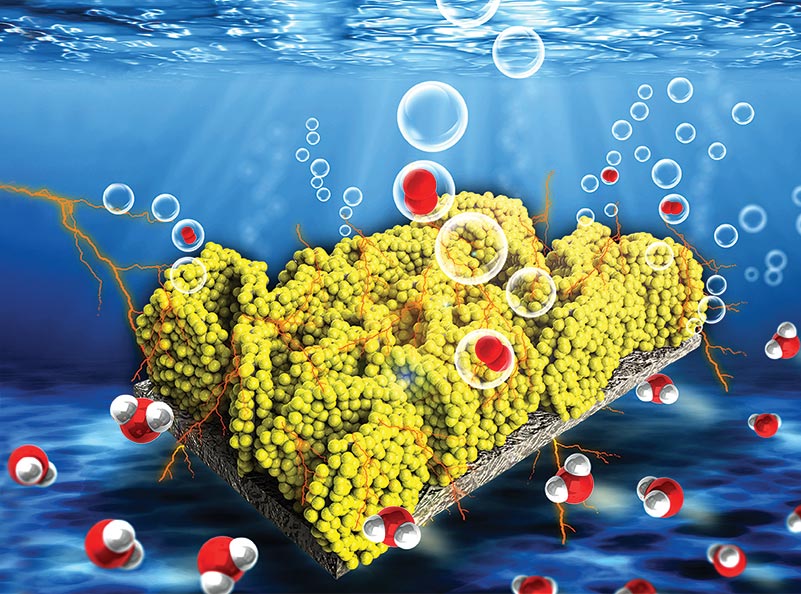
At the macroscale, rust is a common, everyday material. But at the nanoscale, it might hold the promise of sustainable clean energy. Shan Hu, an assistant professor of mechanical engineering, is developing new catalysts made of rust nanostructures that convert light into fuel faster and cheaper than other leading catalysts.
“Rust, or iron oxide, is an excellent example of how seemingly ordinary materials show very unusual, useful properties when we make them into nanostructures,” says Hu. “At the nanoscale, iron-oxide becomes photosensitive, able to absorb sunlight and convert it into electrons. That opens up the door to many new possibilities.”
One such possibility is using iron-oxide nanostructures to drive hydrogen out of water in a process called water splitting. Driving, or “cranking,” hydrogen from water is a first step in using hydrogen as a renewable fuel source, but the process comes with many challenges.
“Typically, these types of reactions happen really slowly, reducing how many electrons transfer from the iron-oxide to the water and crank out the hydrogen,” says Hu. “So, we developed a new type of nanoparticle catalyst to speed up and improve the reaction.”
Hu and her research team found that their new nanoscale iron-nickel catalyst can beat the performance of ruthenium, a benchmark water splitting catalyst material. And, replacing the scarce and expensive ruthenium with abundant and cheap iron and nickel helps reduce costs.
Hu’s catalyst also requires less voltage to activate the reaction than other water-splitting processes. “Usually this type of reaction requires 1.5 or 1.6 volts to crank the hydrogen, but our new catalyst does the job with only 1.2 volts, a huge energy savings,” says Hu.
After making the breakthrough in water splitting, Hu has now turned her attention to harnessing the potential of nanostructures in other areas.
“We have a lot of big challenges facing society – energy needs, illnesses – just to name two. The never-seen-before abilities of nanostructures may be the new piece of the puzzle we need to solve our pressing problems,” says Hu.